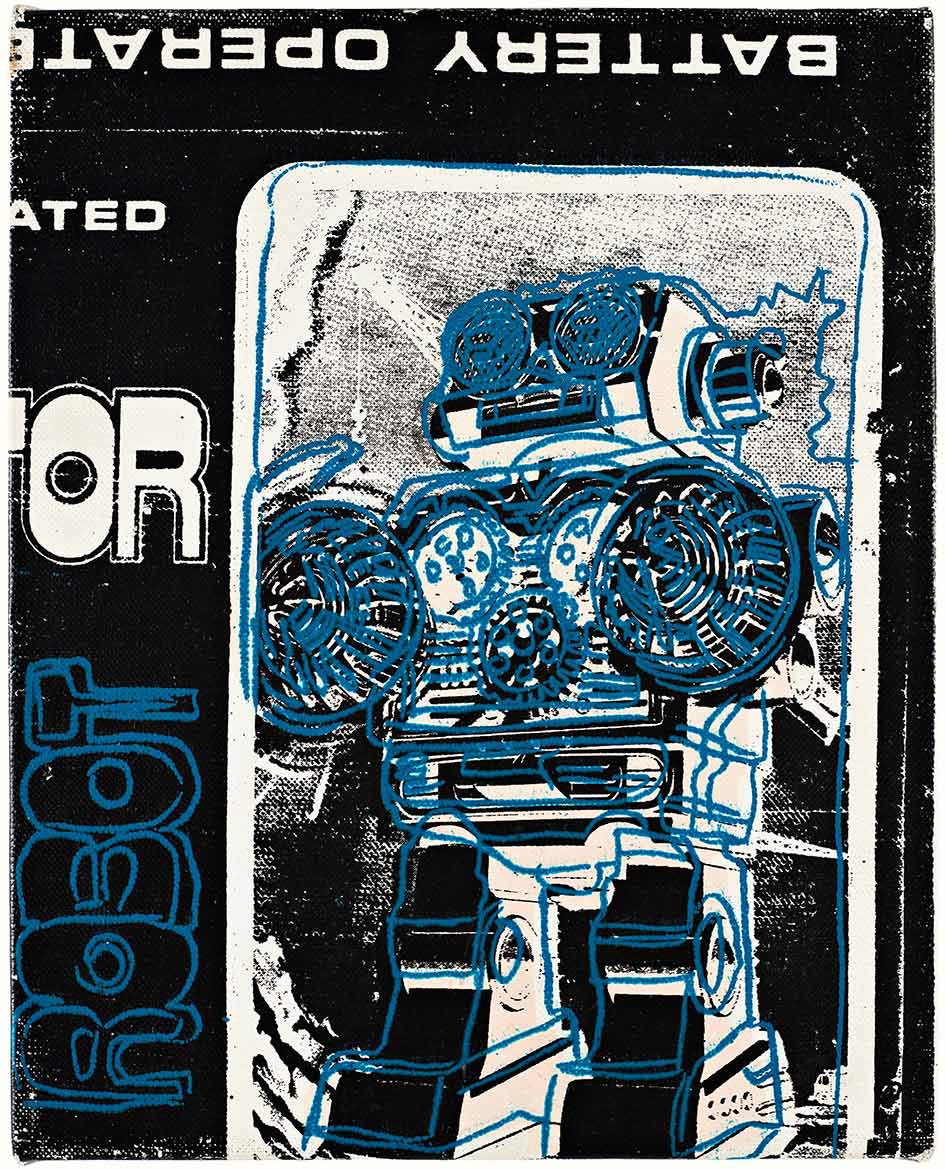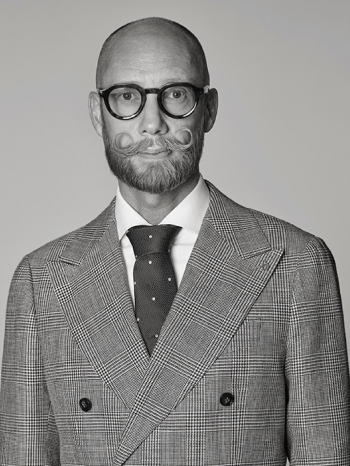Anniversary auctions at Bukowskis presenting Andy Warhol
Robot was part of the series Toy Paintings, also known as Toy Series executed in 1983 and commissioned by the legendary art dealer and collector Bruno Bischofberger in Zurich. He had simply asked Andy Warhol to make an exhibition for children. Warhol was quick to respond, he loved the idea, and composed a comprehensive series of 128 paintings depicting monkeys, parrots, dogs, clowns, robots and so on. The artist had found the inspiration for the paintings in his own collection of wind-up mechanical toys. A few years later Warhol described the work in an interview in New York Times when about a hundred of his paintings were being shown at the Newport Art Museum: “Lots of international toys are included”, Mr Warhol said, “because a lot of them are the cutest of any I’ve seen.”
When the series was first shown at Galerie Bruno Bischofberger, under the exhibition title Paintings for Children (3rd December 1983 – 10th March 1984), the entire show was made as an installation. The walls were covered in distinctive wallpaper created especially for the exhibition, designed by Warhol and with a screen-printed decoration of identical repeating fish. This method of using wallpaper is familiar and recurred often in Warhol’s work. At his first big museum show outside the USA, a major retrospective exhibition at Moderna Museet in Stockholm in 1968, Warhol had already covered the exterior walls of the museum in his own custom wallpaper of multi-coloured cows. Warhol employed this stylistic technique again for his show at the Whitney Museum of American Art in 1971, even if this time he had restrained himself and only covered the interior walls. On several subsequent occasions, Warhol returned to creating wallpaper designs for exhibition walls of museums and galleries. One of the most well-known examples is when Warhol showed his series of paintings of Mao at the Musée Galliera in Paris in 1974. The famous Mao portraits were hung on walls covered in Mao-wallpaper. In 1978 Warhol also designed wallpaper of self-portraits. In fact, the last wallpaper he did was for the exhibition in question, Paintings for Children, which included the toy paintings.
Bischofberger decided together with Warhol that the paintings, which were made for children and in small formats, would be hung at the eye-level of an average 3-5-year-old. The adult visitors had to crouch down as they moved around the gallery in order to see the works properly. Bischofberger also decided that any adult visitor not accompanied by a child under the age of six would have to pay entrance. The money later went to a children’s charity project.

Bruno Bischofberger had worked with Andy Warhol since the 1960s. In 1965 he had included a work of Warhol’s in an exhibition of Pop Art at his Zurich gallery. The following year they met in person for the first time at the Factory and a lifelong friendship began. Bischofberger was one of the founders of and an investor in Interview Magazine, started by Warhol and first published in 1969. Their creative and energetic collaborations resulted in a number of now-legendary exhibitions.
The provenance of Robot, the painting in the auction, is Bruno Bischofberger. Robot was later exhibited at Art Now Gallery in Gothenburg in 1984. Warhol himself had attended the private view and encouraged the visitors to buy a painting for their children. The buyers were told to hang it at a low level in the children’s room and then when the time had come for the child to go off to college or university this could simply be financed by selling the piece off. Business and pleasure! The artwork carries, in its modest format, the great story of one of the 20th century’s most important artists forward into the 21st.
When is the viewing and auction?
Contemporary Art & Design
Viewing: 5 – 9 November, Berzelii Park 1, Stockholm
Open: Mon–Fri 11 AM – 6 PM, Sat–Sun 11 AM –5 PM
Auction: 10 November, starts at 11 am, Arsenalsgatan 2, Stockholm
Catalogue online from 28 October
Contact our specialists



























